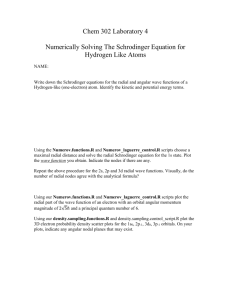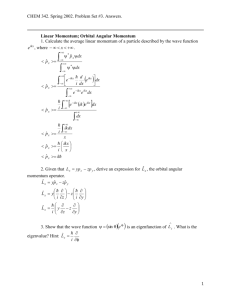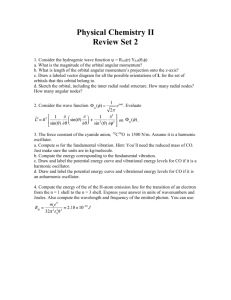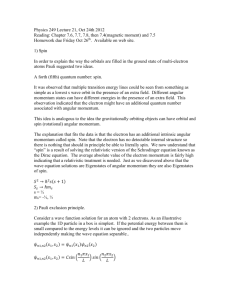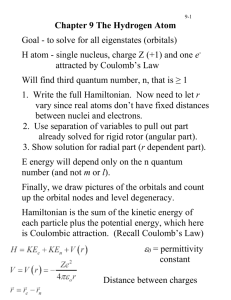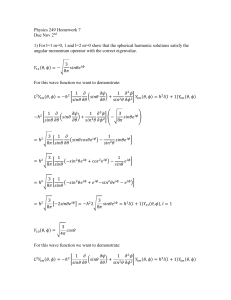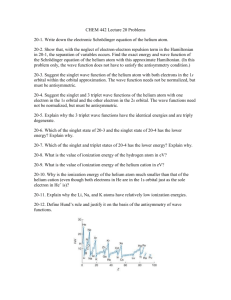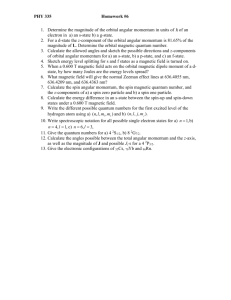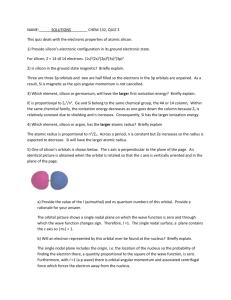PS#3 (Word97)
advertisement
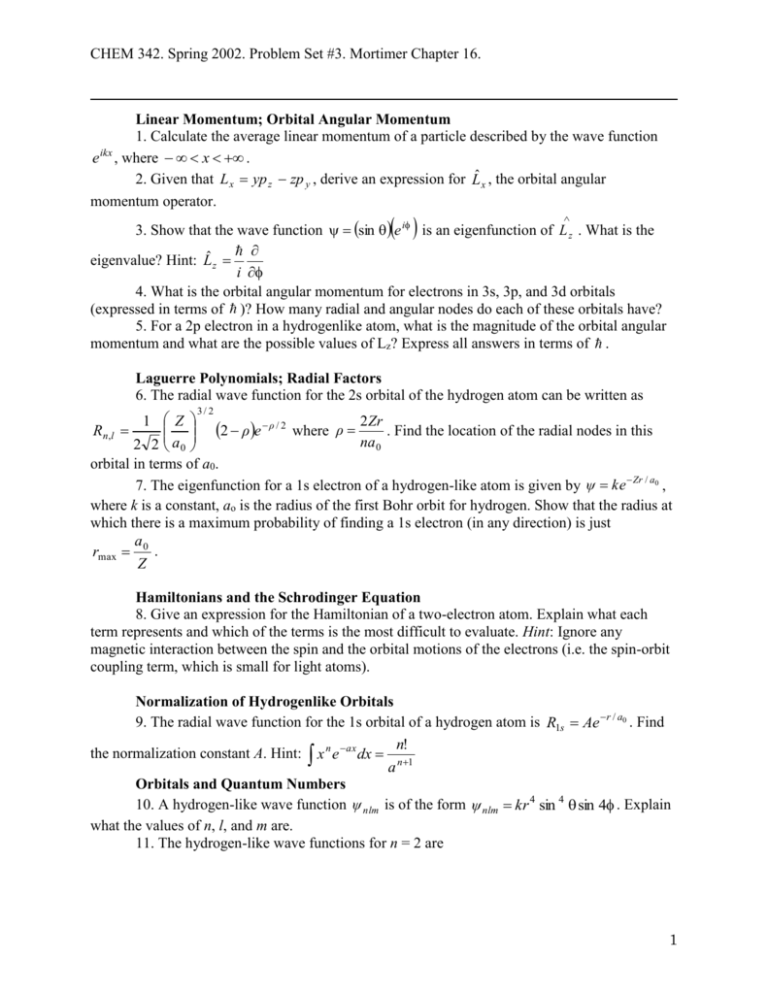
CHEM 342. Spring 2002. Problem Set #3. Mortimer Chapter 16. Linear Momentum; Orbital Angular Momentum 1. Calculate the average linear momentum of a particle described by the wave function ikx e , where x . 2. Given that L x yp z zp y , derive an expression for L̂ x , the orbital angular momentum operator. 3. Show that the wave function sin e i is an eigenfunction of L z . What is the eigenvalue? Hint: Lˆ z i 4. What is the orbital angular momentum for electrons in 3s, 3p, and 3d orbitals (expressed in terms of )? How many radial and angular nodes do each of these orbitals have? 5. For a 2p electron in a hydrogenlike atom, what is the magnitude of the orbital angular momentum and what are the possible values of Lz? Express all answers in terms of . Laguerre Polynomials; Radial Factors 6. The radial wave function for the 2s orbital of the hydrogen atom can be written as 3/ 2 2Zr 1 Z 2 ρ e ρ / 2 where ρ . Find the location of the radial nodes in this R n ,l na 0 2 2 a0 orbital in terms of a0. 7. The eigenfunction for a 1s electron of a hydrogen-like atom is given by ψ ke Zr / a0 , where k is a constant, ao is the radius of the first Bohr orbit for hydrogen. Show that the radius at which there is a maximum probability of finding a 1s electron (in any direction) is just a rmax 0 . Z Hamiltonians and the Schrodinger Equation 8. Give an expression for the Hamiltonian of a two-electron atom. Explain what each term represents and which of the terms is the most difficult to evaluate. Hint: Ignore any magnetic interaction between the spin and the orbital motions of the electrons (i.e. the spin-orbit coupling term, which is small for light atoms). Normalization of Hydrogenlike Orbitals 9. The radial wave function for the 1s orbital of a hydrogen atom is R1s Ae r / a0 . Find n! the normalization constant A. Hint: x n e ax dx n1 a Orbitals and Quantum Numbers 10. A hydrogen-like wave function ψ nlm is of the form ψ nlm kr 4 sin 4 sin 4 . Explain what the values of n, l, and m are. 11. The hydrogen-like wave functions for n = 2 are 1 CHEM 342. Spring 2002. Problem Set #3. Mortimer Chapter 16. 3/ 2 1 Z ψ1 4 2 a o Z ψ2 4 2 a o 3/ 2 1 Z ψ3 4 2 a o 3/ 2 Z ψ4 4 2 a o 3/ 2 1 1 e / 2 cos e / 2 sin cos 2 e / 2 e / 2 sin sin Zr . For each of the above ao wave functions, explain if the wave function is the 2s , 2p x , 2p y , or 2p z function. where ao is the radius for the first Bohr orbital for hydrogen, and Give the l and m quantum number values for each of the above wave functions. 12. The following figure shows a plot of the radial wave function R and a polar plot of the wave function, in the xy plane, for a particular hydrogen-like orbital. Explain what the values of n, l, and m must be, or at least what can definitely be said about them. y R x r PLEASE NOTE The work you hand in should be neat and well organized, and it should show the strategy and steps you used in solving the problems, as well as the bottom-line answers (or solutions). In grading the problems, both your work-up and your final answers/solutions will be examined and evaluated. The work handed in for grading must carry a pledge that the work is entirely yours and was done without any collaboration with other persons (except for the course instructor and TA's). You are encouraged to work with others in doing the exercises and problems found in the textbook, but all work handed in for grading should be done independently. 2
